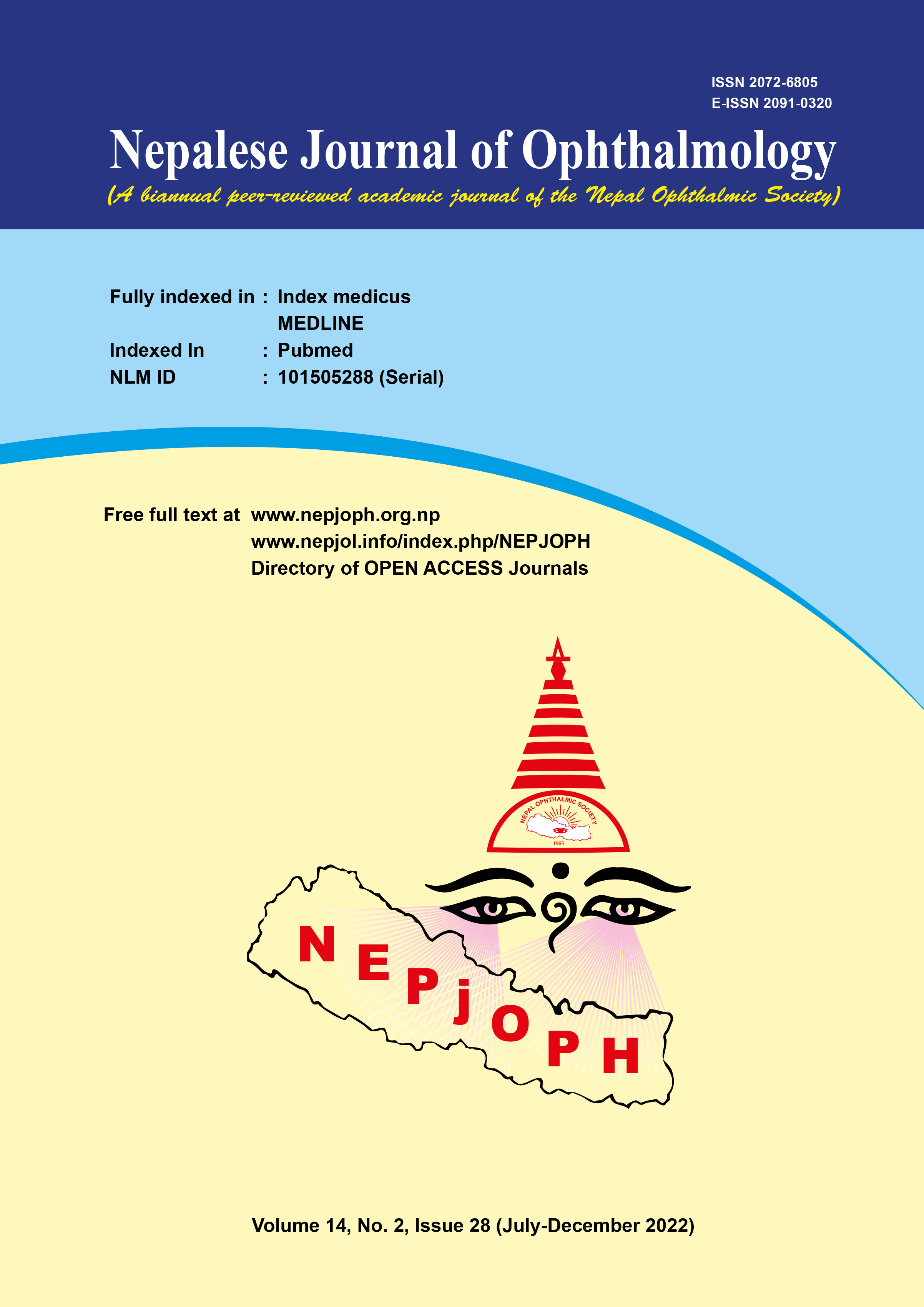Comparison of central macular thickness between diabetic patients without clinical retinopathy and non-diabetic patients
DOI:
https://doi.org/10.3126/nepjoph.v14i2.40259Keywords:
Diabetic retinopathy, Early diagnosis, Optical Coherence, TomographyAbstract
Introduction: Diabetic retinopathy (DR) is one of the leading causes of blindness in patients between 20 and 60 years of age which can be prevented by early detection of diabetic retinopathy. The duration of diabetes is probably the strongest predictor for development and progression of retinopathy. Optical Coherence Tomography (OCT) is a recent advance in imaging which is sensitive in early detection of small changes in macular thickness.
Materials and Methods: This hospital based cross-sectional study was done at a tertiary referral center in Kathmandu, Nepal where 364 eyes of 182 patients (182 eyes in 91 patients in each group diabetes without retinopathy group and nondiabetic group) were evaluated. Thickness of the macula was determined by using Spectral Domain Optical Coherence Tomography (SD- OCT) and compared between diabetic patients without clinical retinopathy and nondiabetic patients.
Results: The mean CMT as measured by Spectral Domain Optical Coherence Tomography in diabetic patients was 236.29±40.31 µm whereas it was 244.25±30.51 µm in non-diabetic cases. The mean central macular thickness of diabetic patients with duration of diabetes less than 1 year, 1-5 years, 6-10 years, 11-15 years and more than 15 years were 217.19±42.22, 233.49±45.69, 248.5±31.37, 250.89±21.62 and 240.75±11.26 respectively.
Conclusions: This study concluded that in diabetic patients there was an initial decrease in central macular thickness which gradually increased with increasing duration of diabetes mellitus. Examination of macular thickness could be a useful modality to evaluate progression of disease before appearance of other clinical signs of diabetic retinopathy.
Downloads
Downloads
Published
How to Cite
Issue
Section
License
Copyright (c) 2022 Nepalese Journal of Ophthalmology

This work is licensed under a Creative Commons Attribution-NonCommercial-NoDerivatives 4.0 International License.
This license enables reusers to copy and distribute the material in any medium or format in unadapted form only, for noncommercial purposes only, and only so long as attribution is given to the creator.




